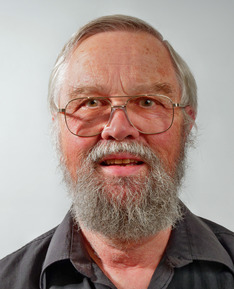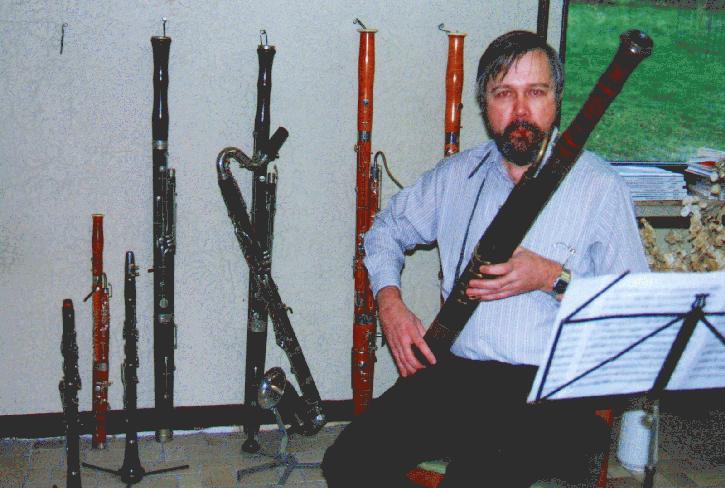
| Greg's musical instruments |
|
||||||

|
|
|
|||||||||||

|
|
|
This is a page I originally wrote in early 1997, before moving into Wantadilla. In the meantime, things have changed, and I have been intending to update this page (in particular, with better photos) for the best part of 10 years. It might still happen, but in the meantime, here are some other links:
Flute by Simiot Tabard à Lyon, about 1830.
It has only four keys (Eb, F, G# and Bb), but they are exquisitely mounted on internal pillars, so you see almost nothing of the mechanism. Unfortunately, I find the lack of a C key a real pain. I have a separate page with more detailed photos of this instrument.
Flute by Siccama, London, about 1870. You should read Rockstro's criticism of this flute, which must rank as one of the biggest flames before the advent of USENET. It's basically a standard 8 key simple system flute, but the holes have been enlarged and repositioned, so it has a brille and plates for the A and E vent holes (3rd finger of each hand). As a result, it is louder than the old simple system flute, but more difficult to play in tune, particularly in the third octave.
Clarinet in Bb by Robert Wolf & Co..
This instrument has 6 keys and is marked on all joints “Robert Wolf & Co. // 45 Moorgate St // London”. As on other English instruments of the period, the 6th key is a long C trill key. Based on the address information in Anthony Baines' “Woodwind Instruments and their history”, this instrument was made between 1840 and 1845
An anonymous C clarinet of dubious ancestry
Bassoon by Savary jeune, Paris, dated 1826

I bought this instrument from Bissonet in Paris in about 1990, and until 2008 I thought it was made in 1824. Then I took some detailed photos and discovered it was made two years later. M. Bissonet tells me that it was found in an old cinema that was being demolished, and he suggested that it might have been used to accompany silent films.
This instrument is interesting mainly because it is a “cheap” Savary. It was restored by Guntram Wolf of Kronach, and despite the “cheapness”, it's a really nice instrument, one of the nicest I have played. It only has 7 keys: 2 on the bass joint (3 if you count the covered C hole), 2 on the wing, and three on the butt. It is currently on loan to Aligi Voltan of Padova.
Bassoon by Savary jeune, Paris, dated 1842.
This is the first Savary I bought, and it was in need of restoration. It's a fairly typical Savary, though it appears it once had a high D key on the tenor joint. In view of the number of these instruments that I have (and the fact that I don't have any other classical bassoons apart from Savarys), I sold this instrument in August 2008, still unrestored.
Bassoon by Savary jeune, Paris, dated 1847.
This is my pride and joy. It's in need of minor attention--mainly repadding. If anybody can point me to somebody trustworthy here in Australia, I'd be grateful. It has 16 keys, including four on the front of the wing; the back is relatively typical, and it has a Bb key on the butt.
Tenoroon (fagottino) by Guntram Wolf, Kronach 1989
This was the very first of the Heckel system tenoroons that Wolf made. Compared to his current production ones, it looks a little primitive, kind of a prototype. Despite what Wolf says, I don't find much use for this one, and so far my daughter hasn't been captivated, either. This design is interesting in that, although it's a tenoroon in C (all fingers up gives you middle C), it's almost as small as an octave bassoon.
Oboe by Guntram Wolf, Kronach 1997
This is my daughter Yana's instrument. It's mainly interesting as an example of new ideas in student instruments. It's made out of pear wood and doesn't have a low Bb key, but apart from that it conforms quite well to Triébert's System 5, the basis of the Conservatoire fingering. Wolf is very pleased with the sound, claiming that it is much less nasal than the modern French instruments. I think this is very much a matter of taste, but in many ways it sounds more like a classical oboe than modern instruments do.
Recorder by Moeck, Celle, 1988 This is quite a nice instrument, made out of olive wood.
Finally, here's a picture of me taken in about 1995 with the 1847 Savary, with some of the other instruments in the background:

From left to right, on the wall you can see:
The Wolf tenoroon (see, it's only just longer than a clarinet).
An old English bassoon by Bessan, about 1890, with a wing bore that Wolf claims is just plain broken by design. As a result, it has four high keys for the left thumb on the wing. Nevertheless, it appears to have been intended for orchestral use.
An old English bassoon by Hawkes & Co, about 1920, intended for band use. It's not a good instrument, but it has sentimental value: I learnt to play the bassoon on a very similar instrument. It's a wonder I wasn't put off for life.
A relatively modern Heckel system bassoon with the inscription “Boosey and Hawkes”. This is a student model and the first instrument I bought, years after learning the bassoon at school. When I contacted B&H about it, they refused to accept it as one of theirs: it was made in Czechoslovakia, and has an astounding poverty of tone. Not surprisingly, now that I have real bassoons, I'm prepared to part with this one.
Finally, my “real” bassoon. If you believe the inscription, it was made by Moosmann (in 1989), but in fact Guntram Wolf prepared the wood. The light colour is something that he was experimenting with at the time (compare the tenoroon). On the other hand, it's a complete coincidence that the B&H bassoon is almost the same colour. Instead of the standard shellac treatment, Wolf oiled the wood for months on end, which he promised would give a superb tone. The result certainly seems to bear out his claim. As a result of the treatment, unlike most bassoons, the surface isn't shiny: it's slightly matt.
Finally, in the foreground, you can see three of my modern clarinets (Bb, A and Bb bass), all by Buffet Crampon of Paris.
The following photos were taken in November 2001. Since the previous photos, I have acquired another bassoon and an oboe by Thibouville Lamy. Here are some placeholder photos of some of my bassoons:
From left to right, the 1826 Savary, the 1842 Savary, the 1847 Savary, the Besson instrument, a new acquisition by Buffet Crampon, and the Hawkes instrument.
The butts of the 1847 Savary, the Besson and the Buffet Crampon.
The tenor joints of the 1842 Savary, 1847 Savary, the Besson and the Buffet Crampon.
Elsewhere I have another A clarinet by a rightly nameless Czech manufacturer (about 1960), an Eb clarinet (“pig whistle") by Buffet Crampon, a flute by Hammerschmidt, and a number of other recorders.
| Greg's home page | Greg's diary | Greg's photos | Copyright |